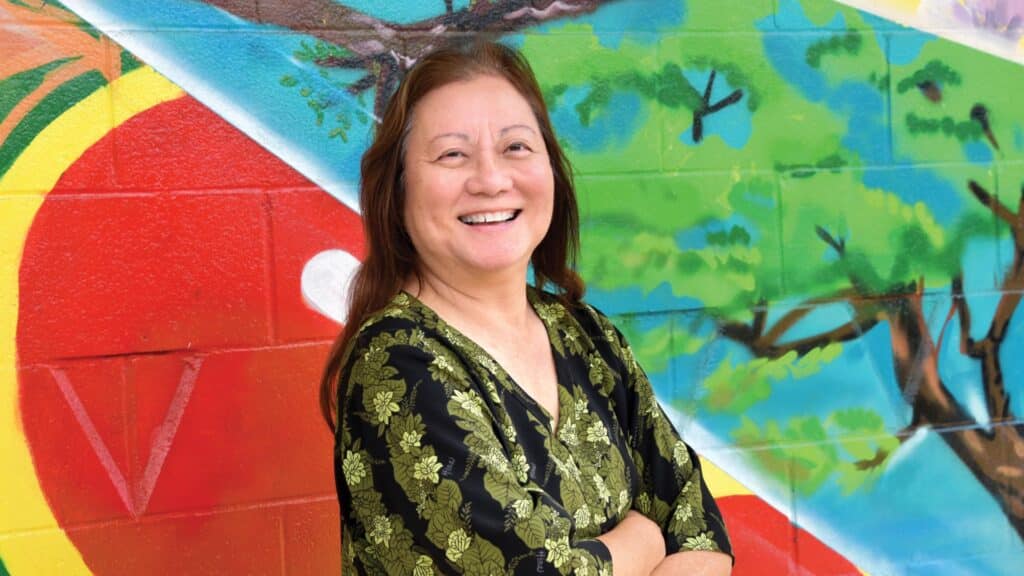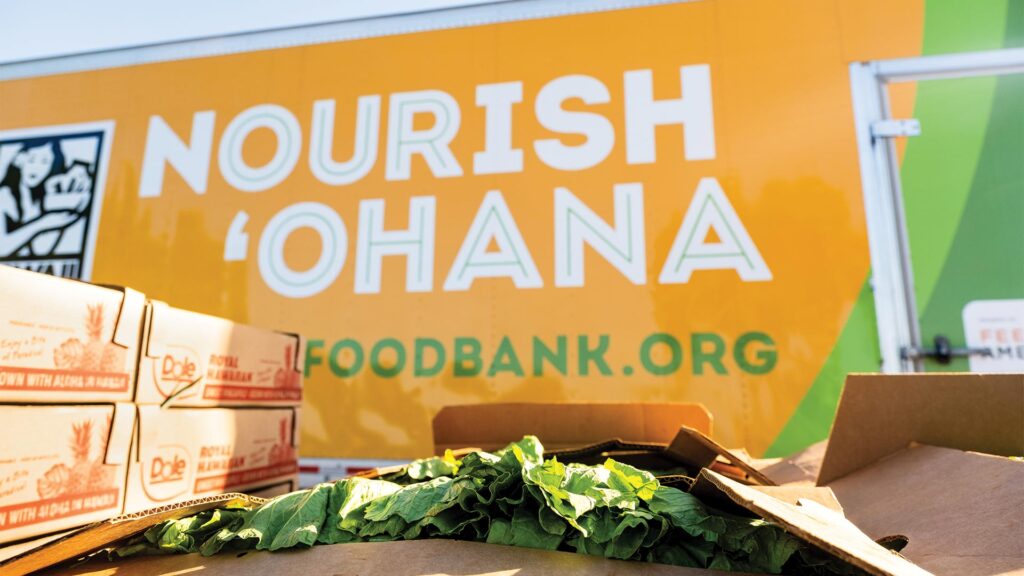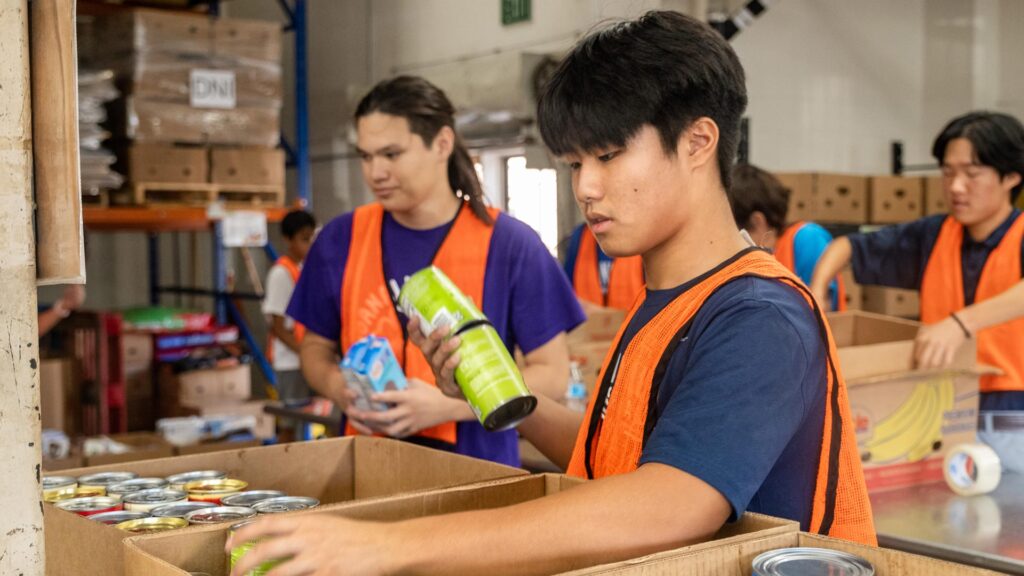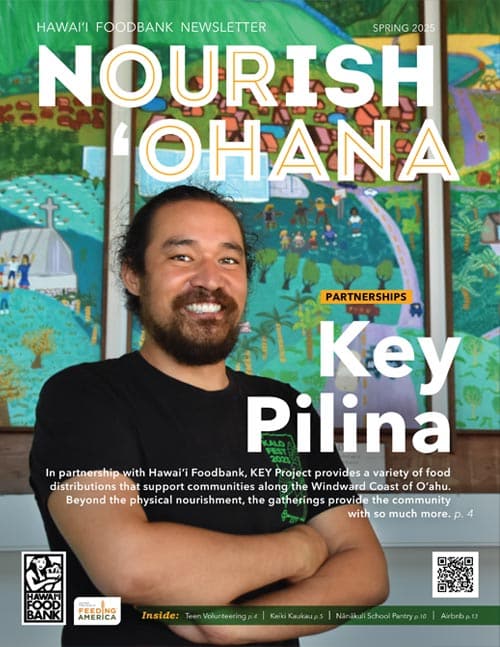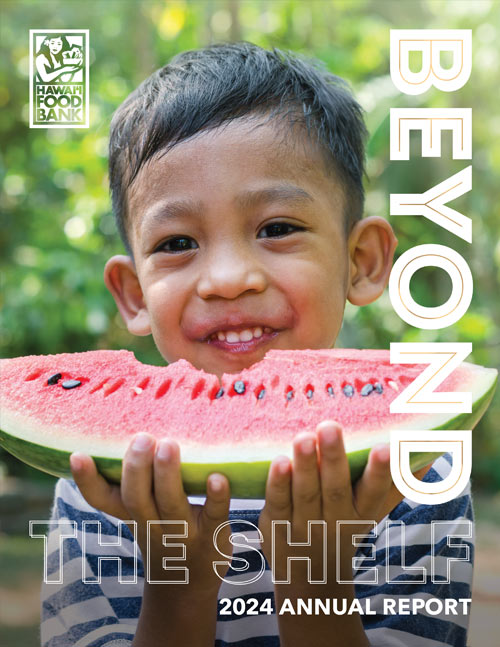Farm to Families: Kahumana Farms
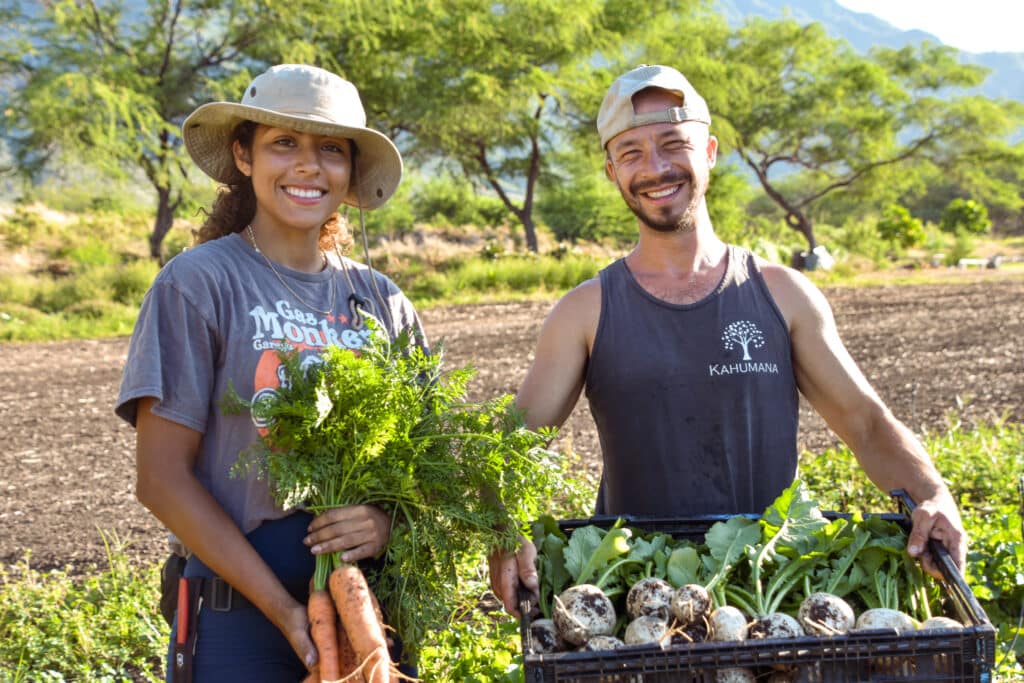
Hawaii Foodbank
Hawaiʻi Foodbank’s partnership with Kahumana Farms supports local agriculture while providing healthy, local fresh produce to communities experiencing hunger.
Food hubs like Kahumana Farms aim to achieve food security and sustainability by connecting farmers with local markets while increasing food access for community residents. Food hubs are an emerging, innovative approach to aggregating and distributing locally grown food, and Kahumana Farms has been a key player in the movement towards integrating community-supported agriculture in Hawaiʻi.
In April 2020, as the COVID-19 pandemic disrupted both the food supply and residents’ lives, Hawaiʻi Foodbank announced a strategic partnership with Hawaiʻi Farm Bureau, purchasing $200,000 in local agricultural products for community distribution. Within six months, Hawaiʻi Foodbank more than tripled that amount, investing more than $750,000 in locally grown produce while supporting 19 Hawaiʻi farms in the process.
“There have been many, many benefits that have happened in local farming, and the food and agricultural community is better because of Hawaiʻi Foodbank’s involvement.”
— Saleh Azizi, Kahumana Farms
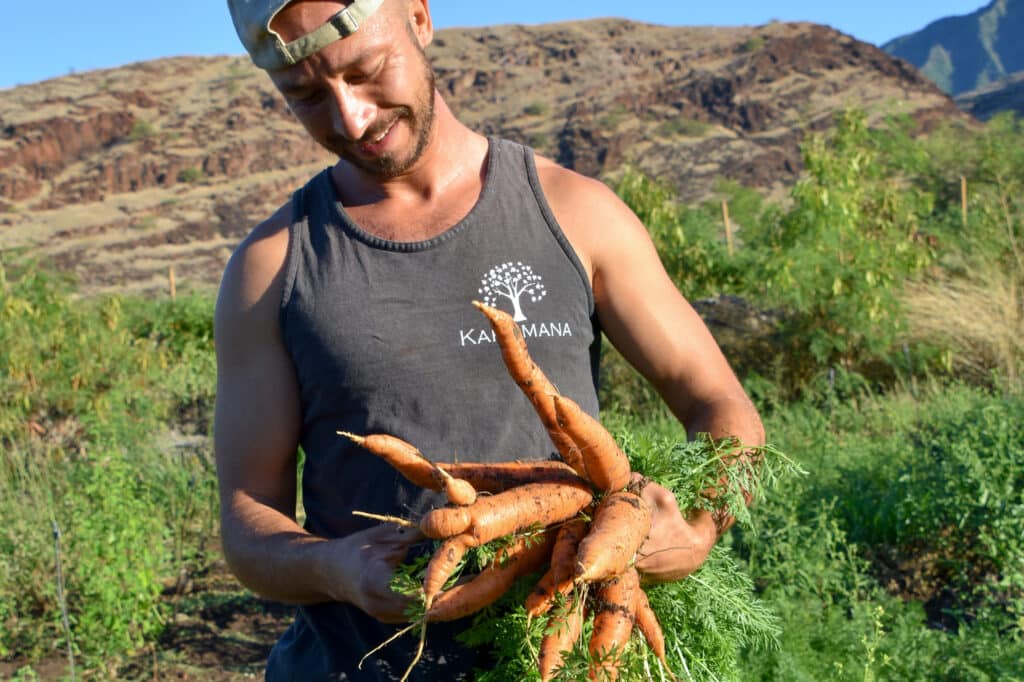
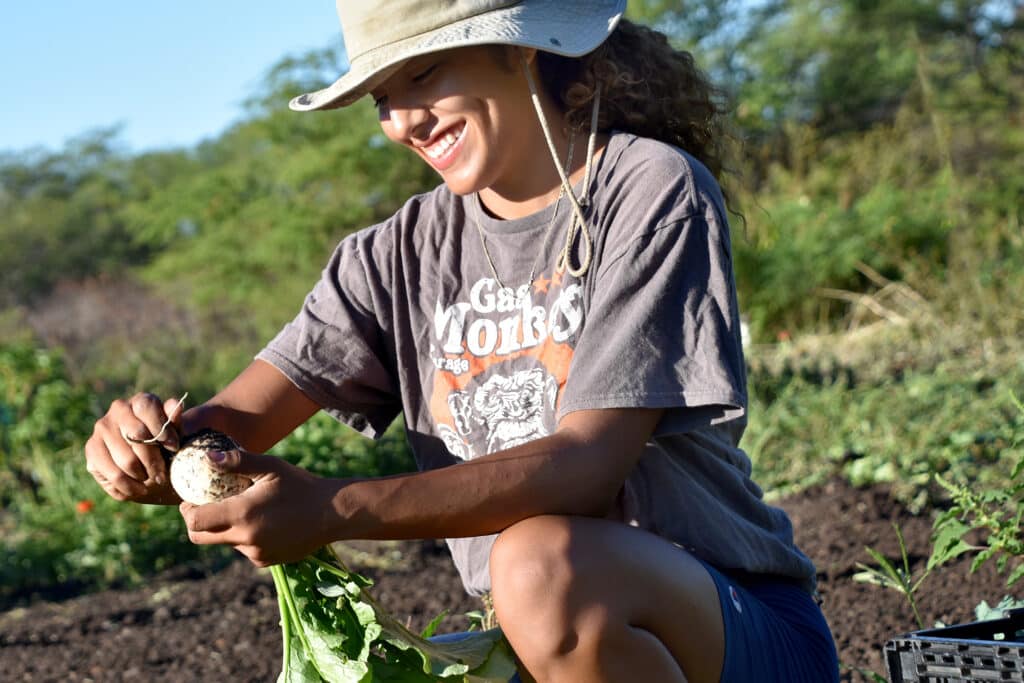
1. Teach Our Keiki about Giving Back
This investment helped many farmers sustain operations during the pandemic and offset losses from the shuttered tourism industry while helping meet the unprecedented need for food for those who suddenly found themselves unemployed. For Kahumana Farms on Oʻahu, Hawaiʻi Foodbank became their primary customer.
“When the pandemic happened, we had the opportunity to jump in and help [small growers and farmers in the community]. And that went hand in hand with us being able to fulfill larger orders — like with the Foodbank’s community food distributions,” says Saleh Azizi, who manages special projects for Kahumana Farms.
“To establish a local food distribution system as part of making a more food secure Hawaiʻi, Hawaiʻi Foodbank has been a big part of this for us.”
— Saleh Azizi, Kahumana Farms
“Hawaiʻi Foodbank coming in and ordering more from us actually ended up helping save those farmers, and it helped us operate on a larger scale than ever before. We went through incredible increases from helping sell and distribute roughly 150,000 pounds of produce before COVID-19 to 700,000 pounds of local produce today.”
In the first year of the partnership, Hawaiʻi Foodbank purchased more than 207,000 pounds of fresh, local fruits and vegetables from Kahumana Farms. Nearly 30% of the farm hub’s distribution went to support local keiki, kūpuna and families in need of assistance.

“These immense increases benefited everyone. It benefited people receiving food and the farmers. They’re going to work feeling confident and safe. And it benefited people for employment. We started hiring more people, and it’s been quite the morale booster for employees knowing that they’re serving people in our own communities,” reflects Saleh. “Things began happening within our mission that we had hoped for, for years. And also, the response from the public, it was sort of like that saying, you know? ‘Build it and they will come.’ Honestly, before COVID-19, we didn’t know the food hub was going to be such a thing. We hoped for it. But after COVID-19, we knew. It was like the food hub became a successful proof of concept, and then it also connected us with all the other food hubs in Hawaiʻi. And everybody got stronger together.”
Stronger together. The success of this partnership has enabled Hawai‘i Foodbank to expand upon its own programs, launching a new pilot program called Kūpuna Fresh in 2021. The initiative aims to provide more local, fresh produce to seniors in need of food assistance, and the majority of produce comes directly from Kahumana Farms. In the program’s first year, the food hub supplied the Kūpuna Fresh program with nearly 43,000 pounds of nutritious, Hawaiʻi grown produce.
3. Join the Fight Hunger Hui
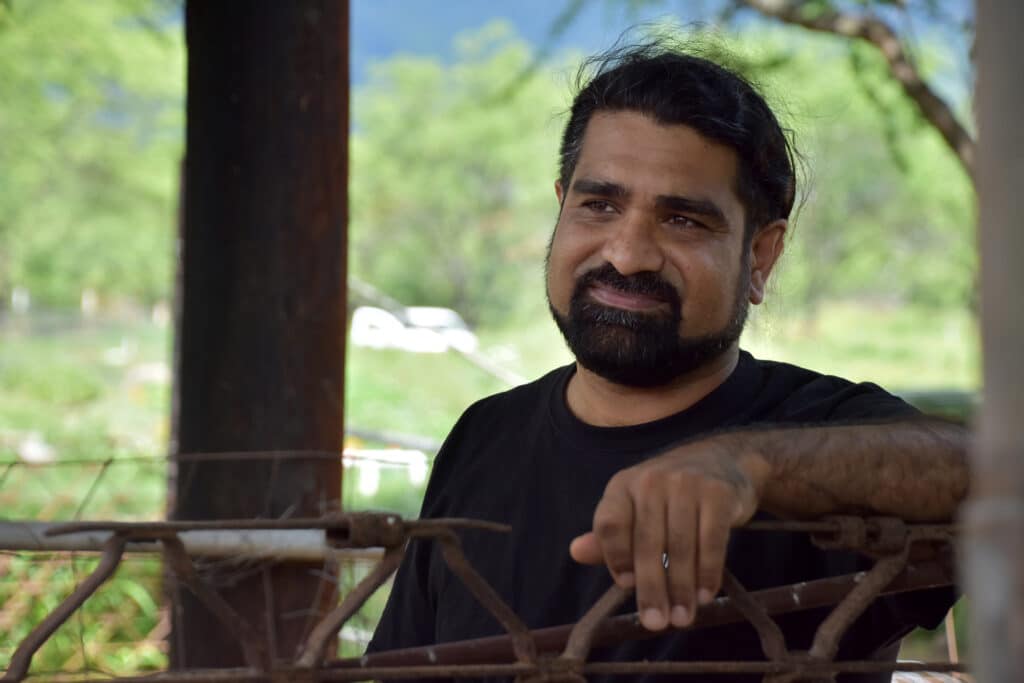
For Saleh, this partnership helps vindicate his conviction that community-supported agriculture can play a vital role in Hawaiʻi’s food ecosystem. “To establish a local food distribution system as part of making a more food secure Hawaiʻi, Hawaiʻi Foodbank has been a big part of this for us,” says Saleh. “There’s been no other organization that has supported us this much. It’s been absolutely game-changing. It’s allowed us to achieve a lot of the goals towards sustainability that we’ve wanted for a long time. There have been many, many benefits that have happened in local farming, and the food and agricultural community is better because of Hawaiʻi Foodbank’s involvement.”
Today, Kahumana Food Hub boasts over 200 growers and distributes 882,000 pounds of food. You can learn more at kahumana.org/farmhub.

